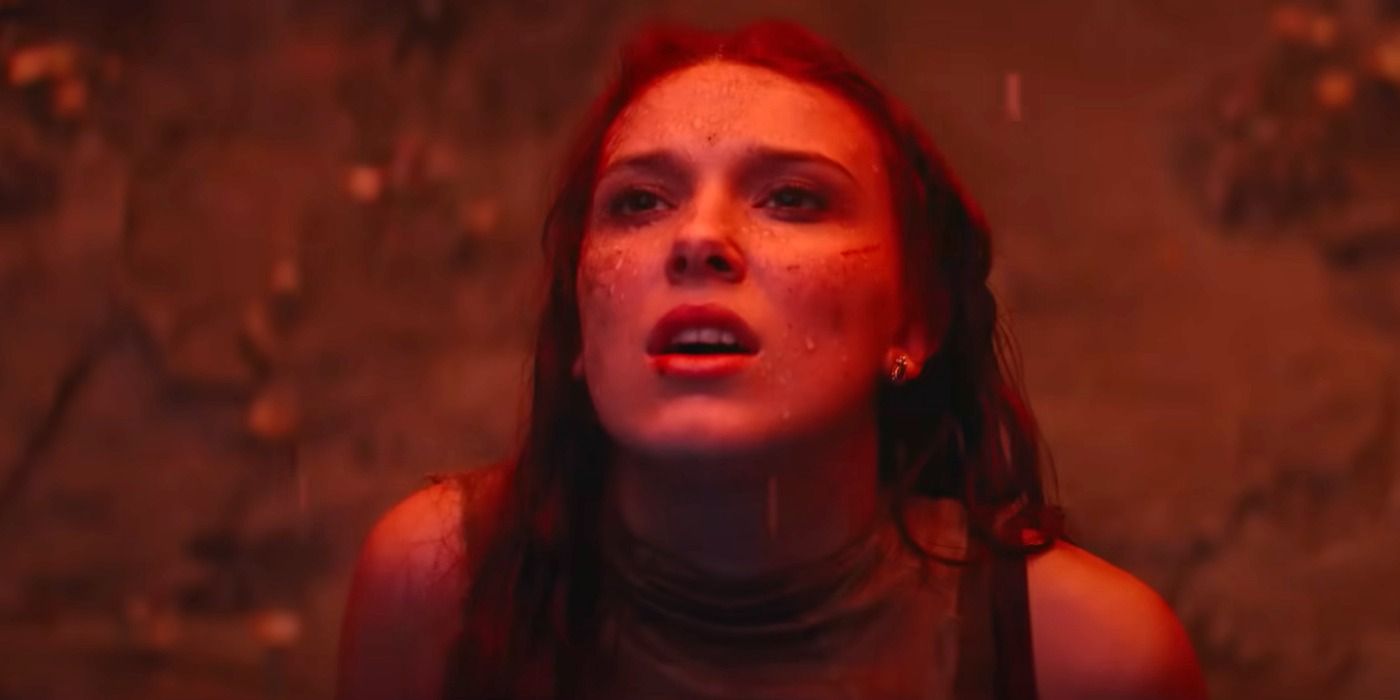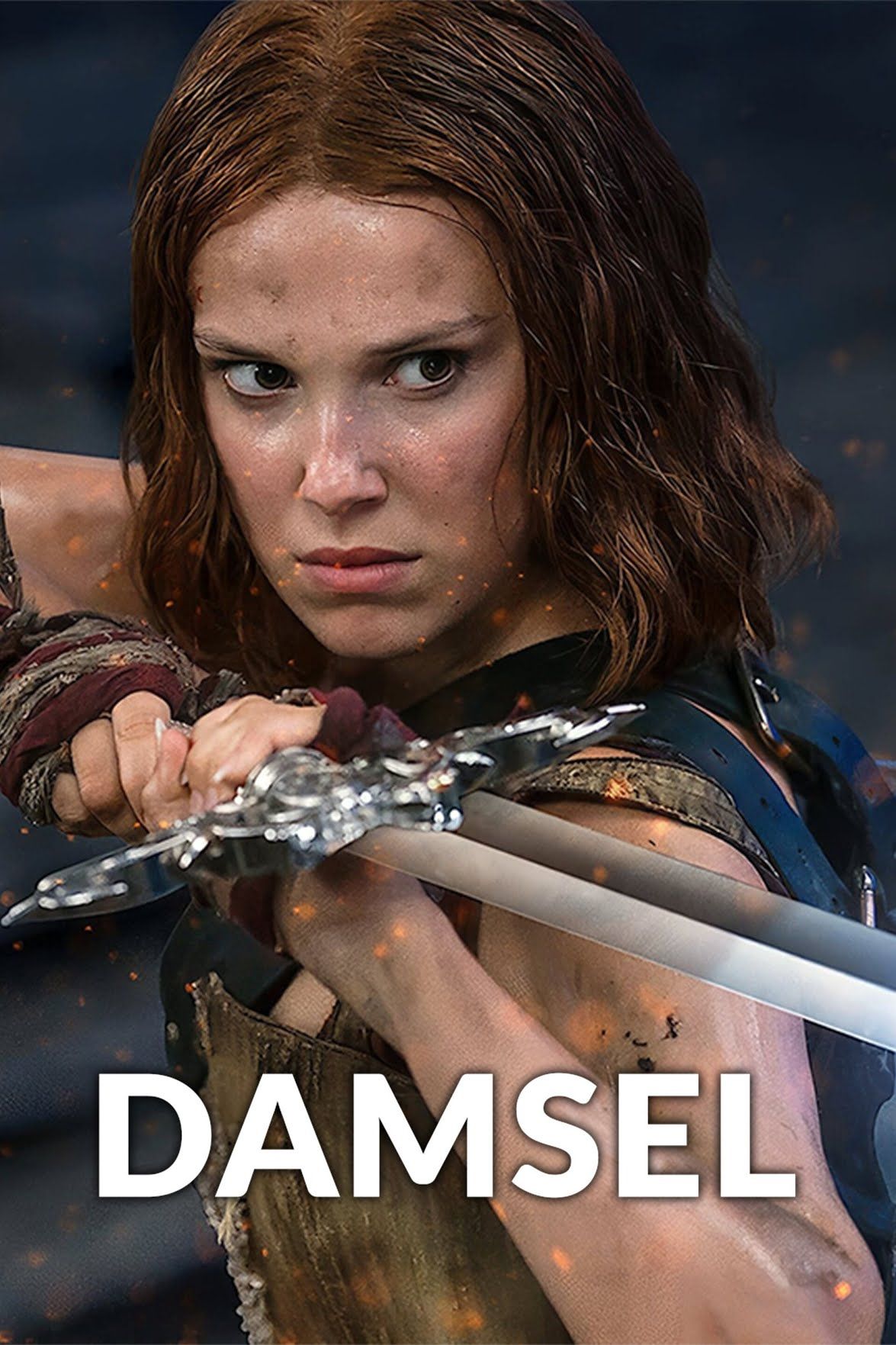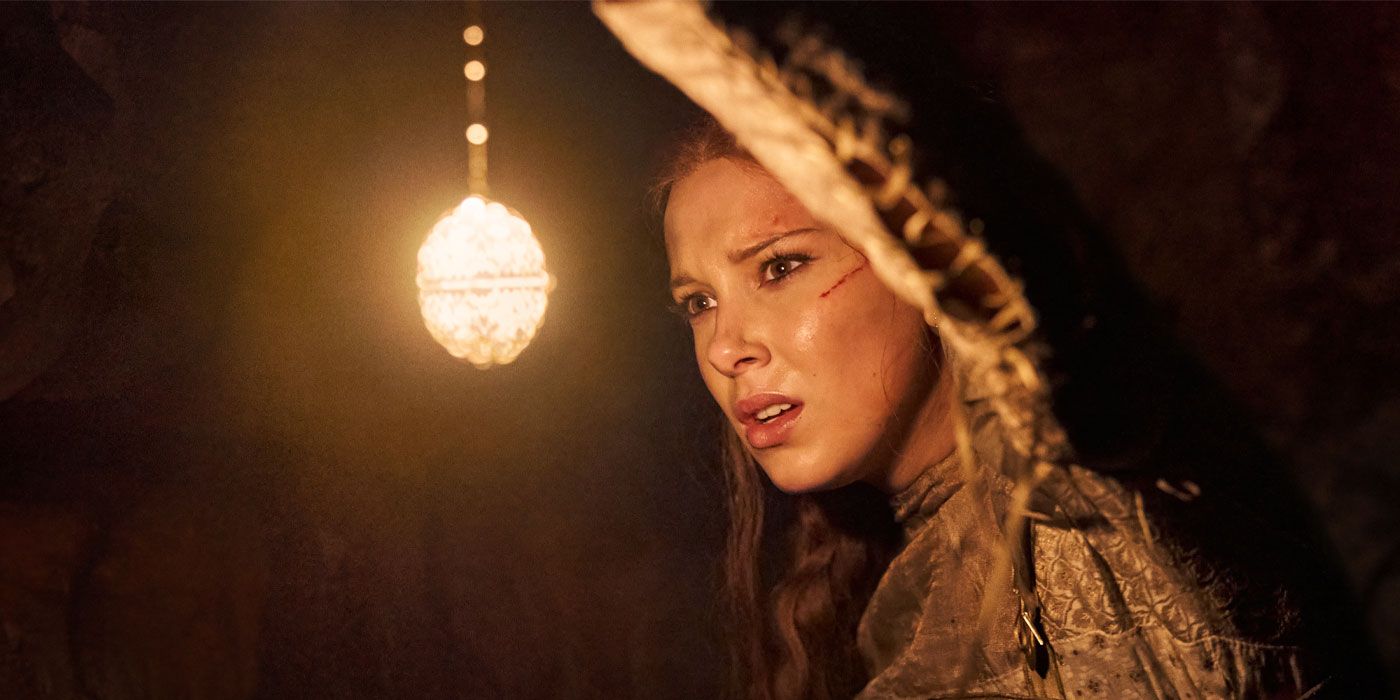The Big Picture
-
Damsel
is visually stunning with great effects and an endearing lead. - The final act rushes through poignant moments, while neglecting deeper themes from the novel.
- Critically acclaimed actresses like Robin Wright and Angela Bassett are underused.
Once upon a time, fantasy could be transgressive simply by existing. Even when the genre dipped into the aesthetics of the Middle Ages and all of the grim ephemera that accompanied it, such stories could still feature a badass female character who slayed dragons, defied gender norms, and found companionship along the way. While Netflix’s latest epic fantasy Damsel is no The Princess, it is also not Willow or Ladyhawke. It tries far too hard to shake a fist in the face of the patriarchy—or, in this case, the matriarchy—and prove to the world that it’s “not like the other girls.”
What Is ‘Damsel’ About?
 Image via Netflix
Image via Netflix
Billed as a dark fantasy, Damsel is at its absolute best when it is a survival thriller. It is essentially Ready or Not with dragons and a few added twists along the way. Elodie’s (Millie Bobby Brown) kingdom needs financial support and, to secure the much-needed capital, her father (Ray Winstone) arranges for her to marry Henry (Nick Robinson), the Prince of Aurea—sight unseen. When she and the prince first meet, it seems like a perfect match, as they both yearn to travel and escape their royal duties. But Henry’s mother, Queen Isabelle (Robin Wright), has sinister plans for Elodie to pay off their ancient debt to the dragon that lives in the mountains that tower above their kingdom.
To its credit, Damsel is a visually stunning film. So much so, that it’s hard to believe that it was made-for-streaming, rather than made-for-screen. The dragon is a marvel to watch in action, particularly when it prepares to unleash its molten wrath on Elodie. The glow worms Elodie comes in contact with in the cave are another visual treat as their soft blue hues glisten and glimmer, lighting her way. Other aspects of the film are less glamorous, where you can see the seams of reality and fiction a little more obviously. For all of the impressive visual details offered to the dragon, the actual kingdom feels rather unimpressive. Perhaps it’s unfair to offer a comparison, but when Once Upon a Time was delivering similarly impressive visual effects week after week a decade ago—complete with awe-inspiring magical vistas and storybook castles—Damsel could have done more with crafting the whimsy around Elodie.
‘Damsel’s Script Often Misses the Mark
Damsel’s scribe Dan Mazeau, whose previous work includes Fast X and Wrath of the Titans, does well with structuring the action and adventure elements in the film, but it is to the detriment of Elodie’s character development.
Elodie spends most of the film’s second act in isolation, being taunted and toyed with by the dragon within the cave. She relies upon the messages left behind by the girls who came before her and often sees them like specters watching her struggle to survive. Brown carries this portion of the film, as it relies heavily upon her physical performance to make up for the limited dialogue. While Elodie does talk to herself occasionally, you can feel the absence of an internal monologue at certain points. Because of this, the final act of the film feels very disjointed.
When her family finally comes to her rescue, their sacrifices feel unearned and hollow. The script’s pacing gives Elodie no room to breathe and reflect upon the loss, as she is thrown into crisis after crisis in her fight to escape the cave. The first act does try to establish Elodie’s dynamic with her father, stepmother (an underused Angela Bassett), and sister Floria (Brooke Carter), but it’s very much a case of tell, rather than show. This ultimately leaves the conclusion to their arcs feeling very telegraphed and predictable. Elodie cares for her sister—we’re told as much—but the film never shows a genuine sisterly bond between them. There is no Frozen moment between them that solidifies just how far the elder sister will go to ensure her sister’s safety.
In addition to pacing issues, the final act also suffers from a curious case of characters moving around the map with little explanation. Whether it was created by an editing choice or the omission of connecting scenes, it forces the final act to become a race to the finish line. It blows past vital character moments between Elodie and Flora and Elodie and her stepmother, which makes the final scene feel unearned.
How Does ‘Damsel’ Compare to the Book?
It may come as a surprise, but Netflix’s Damsel is actually based on a novel of the same name, which came about a year ago—while the film was still being made. The book and the film are quite similar, with Elodie falling prey to the scheming ways of the Aurean royals and their antiquated ritual, but the endings of both are starkly different.
In the novel, penned by Evelyn Skye, the outcome of Elodie’s encounter with the dragon is quite distinct from how the film handles it—and for the better. Rather than reducing the prince to a pointless and easily discarded character, the novel seems to acknowledge that he is a victim of his family’s scheme, just as Elodie is. Rather than facing the full brunt of Elodie’s wrath, he is spared, which the film seems disinterested in even humoring. This is, unfortunately, a prevalent trend in media that is aiming to check the “girl boss” box on their checklists. There are some hints towards this notion that Prince Henry might be complacent, but not complicit, yet the film’s endgame punishes him all the same through an uncritical lens.
In the same vein as this blunder, Damsel seems somewhat oblivious to the themes extolled by the outcome of Skye’s novel. In it, Elodie and the dragon are one and the same. They are both female creatures shaped into weapons by the cruelty of others, tricked by deceitful schemes, and blinded by their own misconceptions about those who look different from themselves. Together they forge an unlikely bond—one which the novel takes in a more literal sense than the film ultimately does. Moreover, Skye’s novel draws clear influence from Asian cultures, both with the relationship between Elodie and the dragon, as well as the colonization of Aurea and the eradication of the dragons who called the island home before the humans colonized it.
It may be that Netflix’s Damsel thought these themes were not as palatable to consume on-screen as they are in written form, but it undercuts the deeper meaning of the story. When you’re already playing with the idea of blood binding, why not take the extra step to make it as literal as the novel does? While these changes may not be detrimental to the success of the story Netflix’s Damsel aims to tell, they do set it back. Rather than embracing the more nuanced themes, the film shies away from deeper introspection. At least the novel is there for newfound fans who might seek a better look into Elodie’s dire plight and fight for survival.

Damsel
REVIEW
Even as Millie Bobby Brown is an endearing lead, Netflix’s Damsel is a movie that tries too hard to prove it’s not like the other girls.
Pros
- Damsel is visually stunning, with impressive effects and production design.
- Millie Bobby Brown is an endearing lead that you root for throughout the movie.
Cons
- The final act feels like a race to the finish line, breezing past some of the more poignant moments.
- Damsel relies upon tired tropes, rather than investing in the themes that were present in the novel.
- The film underuses critically acclaimed actresses like Robin Wright and Angela Bassett.
Damsel is available to stream on Netflix in the U.S. starting March 8.
WATCH ON NETFLIX


